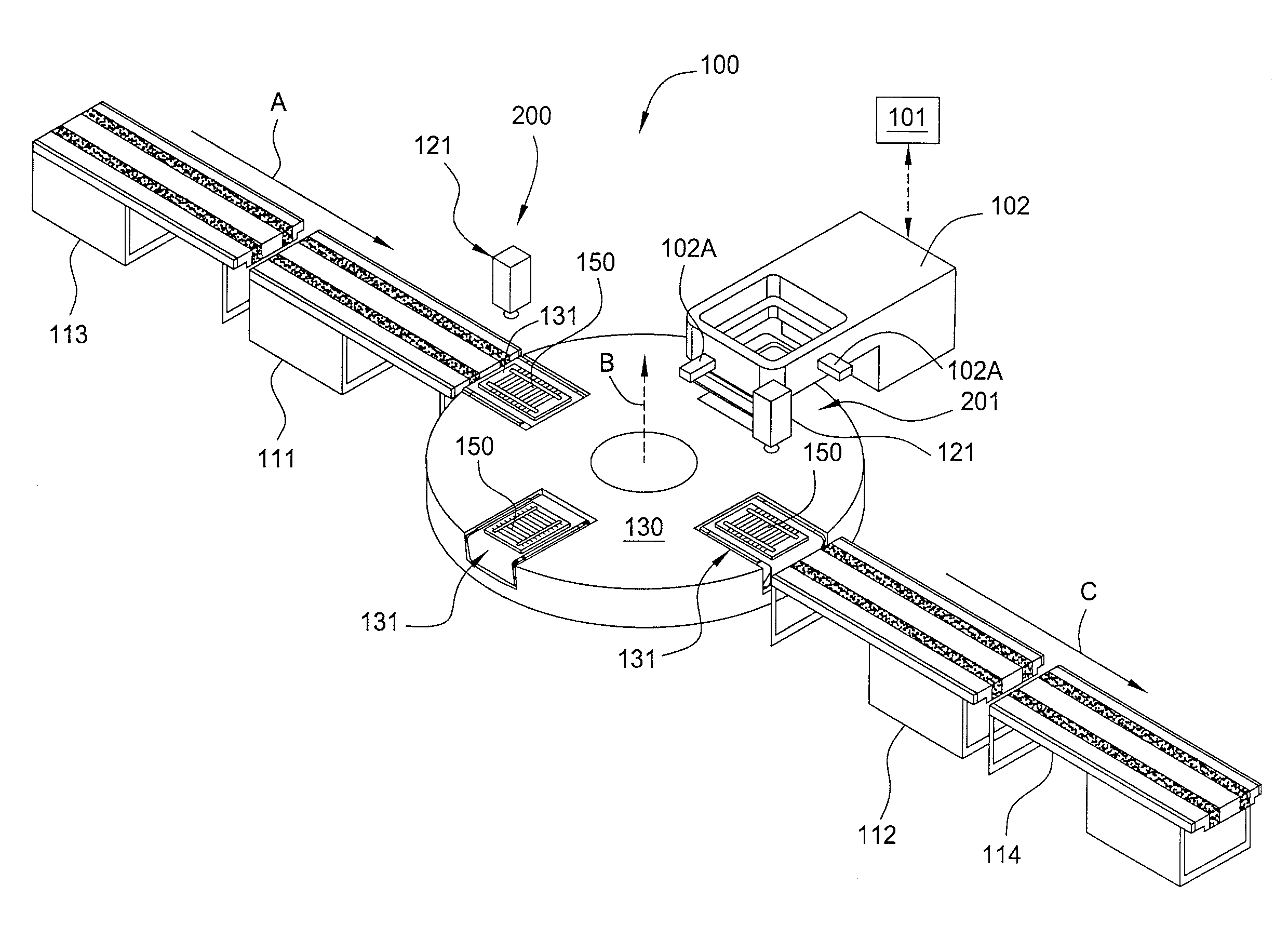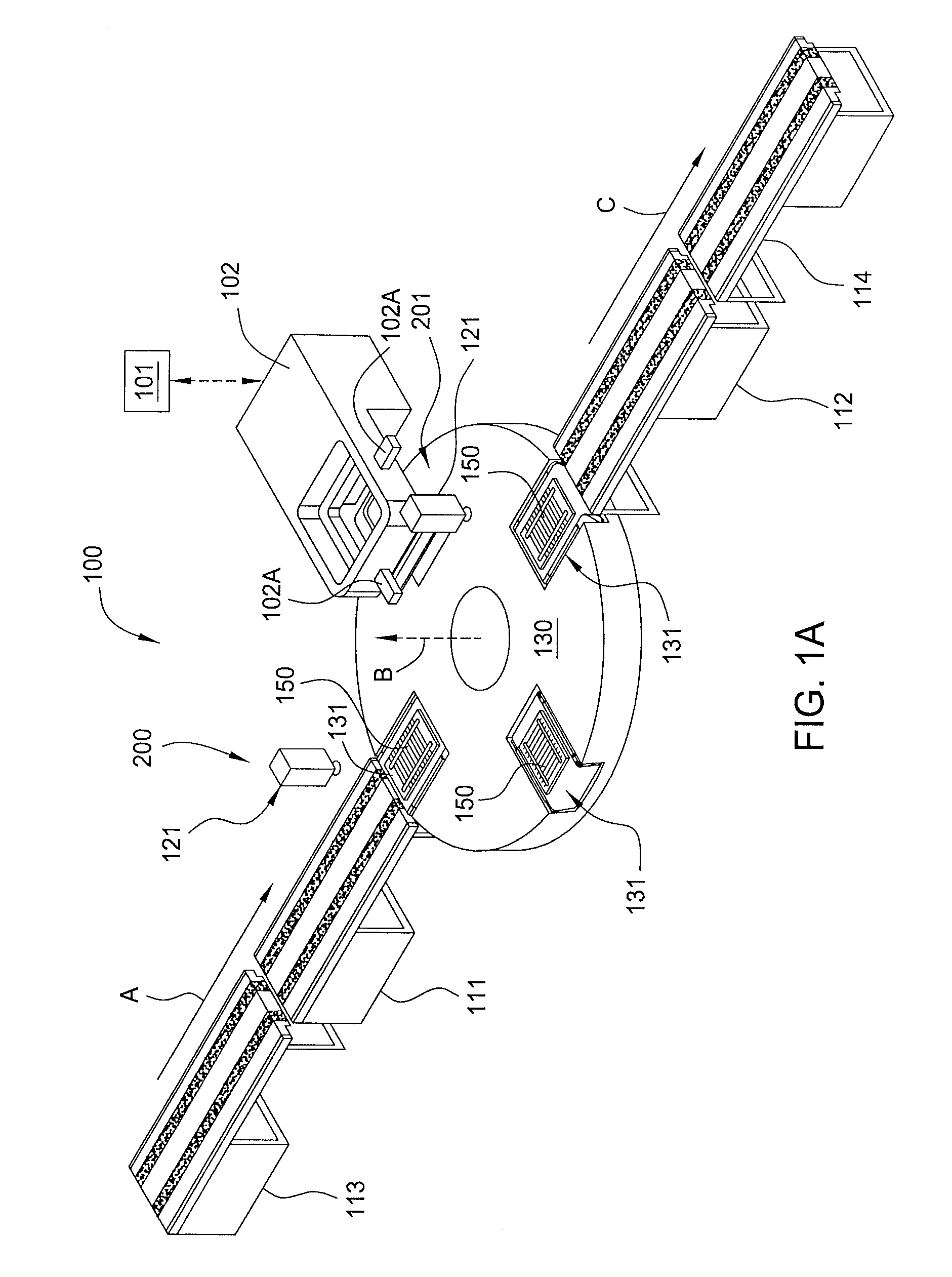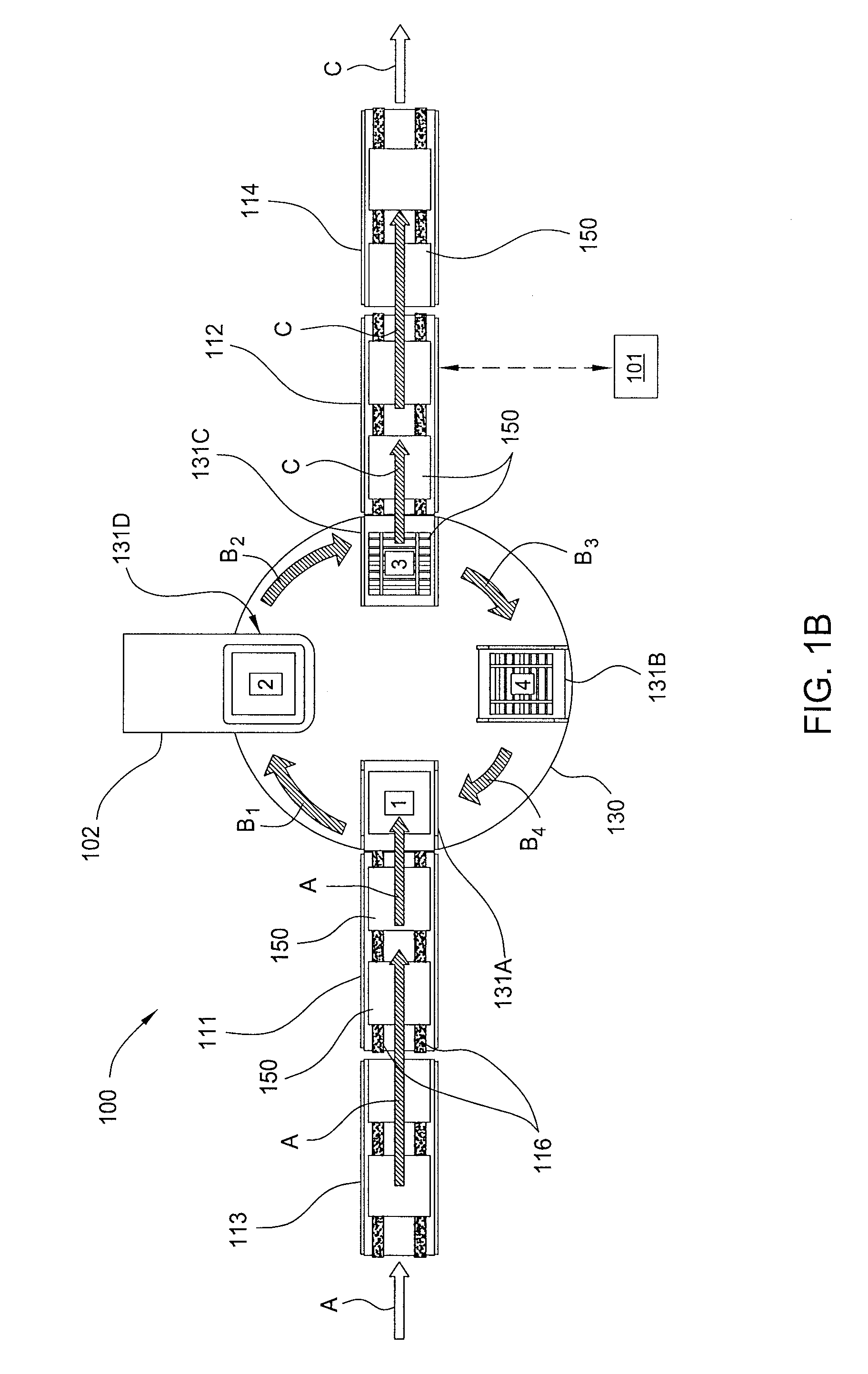Autotuned screen printing process
a screen printing and autotuned technology, applied in the direction of sustainable manufacturing/processing, semiconductor/solid-state device testing/measurement, instruments, etc., can solve the problems of low cost of forming high-quality solar cells, poor device performance, and device yield issues
- Summary
- Abstract
- Description
- Claims
- Application Information
AI Technical Summary
Benefits of technology
Problems solved by technology
Method used
Image
Examples
Embodiment Construction
[0025]Embodiments of the present invention provide an apparatus and method for processing substrates in a screen printing system that utilizes an improved substrate transferring, aligning, and screen printing process that can improve the device yield performance and cost-of-ownership (CoO) of a substrate processing line. In one embodiment, the screen printing system, hereafter system, is adapted to perform a screen printing process within a portion of a crystalline silicon solar cell production line in which a substrate is patterned with a desired material in two or more layers and is then processed in one or more subsequent processing chambers. The subsequent processing chambers may be adapted to perform one or more bake steps and one or more cleaning steps. In one embodiment, the system is a module positioned within the Softline™ tool available from Baccini S.p.A., which is owned by Applied Materials, Inc. of Santa Clara, Calif. While the discussion below primarily discusses the p...
PUM
 Login to View More
Login to View More Abstract
Description
Claims
Application Information
 Login to View More
Login to View More - R&D
- Intellectual Property
- Life Sciences
- Materials
- Tech Scout
- Unparalleled Data Quality
- Higher Quality Content
- 60% Fewer Hallucinations
Browse by: Latest US Patents, China's latest patents, Technical Efficacy Thesaurus, Application Domain, Technology Topic, Popular Technical Reports.
© 2025 PatSnap. All rights reserved.Legal|Privacy policy|Modern Slavery Act Transparency Statement|Sitemap|About US| Contact US: help@patsnap.com



